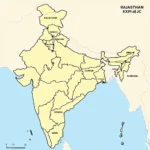From the roar of jet engines to the bustling crowds, the Aeroplane Airport is a captivating crossroads of technology, travel, and human connection. Whether you’re a seasoned globetrotter or a first-time flyer, understanding the intricacies of these aviation hubs can enhance your travel experience and deepen your appreciation for the wonders of flight.
The Vital Role of Aeroplane Airports in Global Connectivity
Aeroplane airports serve as vital gateways connecting cities, countries, and continents, facilitating the movement of people and goods across vast distances. They are not merely points of departure and arrival but complex ecosystems that support a wide range of activities, including:
- Passenger transportation: Aeroplane airports handle millions of passengers annually, providing a seamless and efficient travel experience.
- Cargo handling: The transportation of goods by air relies heavily on aeroplane airports, enabling global trade and commerce.
- Aircraft operations: Airports provide essential infrastructure for aircraft maintenance, refueling, and ground handling.
- Economic impact: Aeroplane airports serve as major economic engines, generating employment opportunities and stimulating local businesses.
 Modern Aeroplane Airport Terminal
Modern Aeroplane Airport Terminal
Navigating the Aeroplane Airport: A Step-by-Step Guide
From check-in to boarding, navigating an aeroplane airport can be a streamlined process with the right guidance:
- Arrival and Check-In: Upon arrival, proceed to the designated check-in counters for your airline. Present your travel documents and baggage to receive your boarding pass.
- Security Screening: Pass through security checkpoints, adhering to regulations regarding prohibited items.
- Departure Gate: Locate your departure gate using the airport’s digital displays or printed maps.
- Boarding: Upon announcement, present your boarding pass and proceed to the aircraft.
 Passenger Boarding Aeroplane at Airport Gate
Passenger Boarding Aeroplane at Airport Gate
Types of Aeroplane Airports: From International Hubs to Regional Connectors
Aeroplane airports come in various sizes and classifications, each serving a distinct purpose:
- International Airports: These large-scale hubs connect countries and continents, handling a high volume of international flights.
- Domestic Airports: Focusing primarily on domestic flights, these airports link cities within a country.
- Regional Airports: Serving smaller cities and towns, regional airports offer convenient access to air travel for local communities.
The Future of Aeroplane Airports: Innovation and Sustainability
The aviation industry is constantly evolving, and aeroplane airports are at the forefront of innovation, embracing technology to enhance efficiency and sustainability:
- Automated Processes: Self-service kiosks, biometric authentication, and robotic baggage handling streamline airport operations.
- Sustainable Practices: Airports are implementing eco-friendly initiatives such as solar power, energy-efficient infrastructure, and sustainable aviation fuels.
- Enhanced Passenger Experience: From luxurious lounges to immersive entertainment options, airports are prioritizing passenger comfort and convenience.
Conclusion
Aeroplane airports are more than just transportation hubs; they are gateways to new experiences, connecting people and cultures across the globe. Understanding the role of these aviation marvels and navigating their intricacies can transform your travel journey into a seamless and enjoyable experience.
For assistance with your travel plans or any aviation-related inquiries, please contact us at +13089626264, email us at [email protected], or visit our office at 404 Bothwell St, Oxford, NE 68967, USA. Our dedicated customer support team is available 24/7 to assist you.

